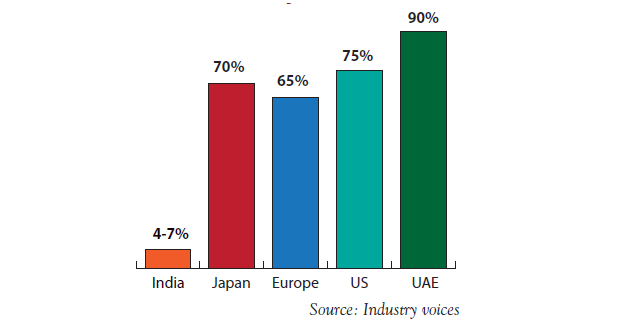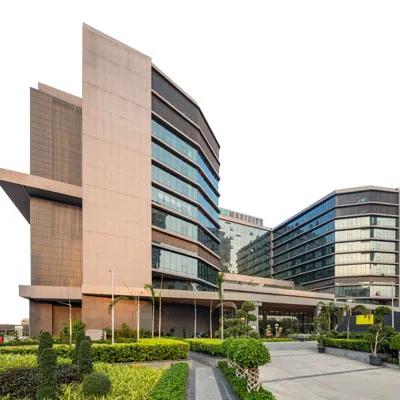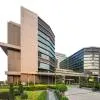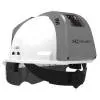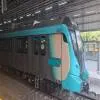Clear demand drivers will propel the concrete industry once the economy turns around.
Concrete is a basic building block. But so far, Indian concrete consumers prefer to make the concrete they use. Ready-mix concrete (RMC) accounts for only 4-7 per cent of the country´s cement consumption whereas 70 per cent of the cement produced in Japan gets consumed by its RMC business. Corresponding conversion ratios are 65 per cent in Europe, 75 per cent in the US and 90 per cent in the UAE. Also, the use of concrete blocks, bricks and pavers is still in a nascent stage in India.
Short-term prospects
Business confidence has fallen in the concrete equipment segment over the past few years. Demand for transit mixers is expected to be around 9,000 units, concrete batching plants 2,800 units, and concrete pumps around 3,600 units. ´Demand for more mechanisation is stagnant or has even reduced since 2011. The Indian market has not lived up to the potential we foresaw five years ago. Transit mixer sales have dropped by 60 per cent, batching plants by 20 per cent and truck-mounted boom pumps by 40 per cent. Only the sales of stationary pumps have been more or less stable,´ says Wilfried Theissen, Managing Director, Putzmeister Concrete Machines Pvt Ltd. ´The only glimmer of hope is that the mood in the market has improved after the BJP´s landslide victory. Maybe things will start to become better next year and change by 2017.´
What about the RMC and pre-shaped concrete segment? According to Mohammed Saleem, Senior Manager, Business Development, RDC Concrete India, ´Demand has not been affected by the outcome of the elections so far. Certainly, the mood is more upbeat but this has yet to convert into more projects being implemented and, hence, higher demand for RMC. We expect demand to start to grow only by the next fiscal, first, possibly as the real-estate sector picks up and then by various infrastructure works getting underway.´
In some corners, however, the turnaround has begun. Anil Banchhor, Chief Executive-Concrete Business, ACC Ltd, says ´The demand for RMC has been on a slow recovery path for the past 12 months. Market volumes have grown between 4 per cent and 9 per cent in different cities. Markets in south Indian cities are growing faster than others.´
Bright future
Bright long-term prospects for all segments of the concrete industry are attracting new players to the fray. Overseas concrete equipment companies that have entered the country include Masa Gmbh, Hess Concrete Machinery Pvt Ltd and Toyoto Forms. And Japan´s KYB Corporation has acquired a 50 per cent stake in Conmat Systems Pvt Ltd.
Newcomers are fast making a niche for themselves. ´Masa has been able to kick-start in India very positively notwithstanding the fact that India is a price-sensitive market,´ says Ashwani Tandon, Sales Manager, Masa Concrete Plants India Pvt Ltd. ´It helps that customers are fully aware of the latest technologies being used in developed countries and appreciate Masa´s fully automatic machines made in Germany with mass production capacity and uncompromising quality. The company´s expertise in concrete and precision engineering has won the confidence of many players such as Sobha Developers, Basant Beton and Adhya Blocks.´
In just four years, Hess has successfully installed and commissioned plants for concrete companies and infrastructure companies such as UltraTech, Ecologic, Jindal (JSPL), KJS Concrete, Kankaria, Lanvin Infra, JK Lakshmi and Lafarge. According to Manoj Kumar, Managing Director, Hess Concrete Machinery India Pvt Ltd, ´India has a bright future for concrete in different forms - including concrete blocks, bricks and pavers.´ Hess has brought its entire product range to India and is partially producing and assembling these here to pass on manufacturing savings to local customers. Its compulsory concrete mixer delivers optimum mixing results within minutes. Its highly automated Multimat series manufactures concrete blocks. Variant produces concrete pipes, and so does the Radial Press but at a higher speed. A new addition is Prinzing-Pfeiffer concrete pipe making machines and concrete mixing machines and batching systems based on 3D CAD/CAE.
Performance consciousness
Buyers of concrete equipment are increasingly demanding cost-effective products. To this end, concrete pump market leader Putzmeister has made significant improvements to its truck-mounted boom pumps and stationary pumps. ´Introducing superior quality steel has substantially helped lower the weight of equipment and hence reduce fuel consumption,´ explains Theissen. ´New controllers and improved software are allowing better monitoring of all the process parameters like pumping hours, oil temperature, engine hours, etc. Our German and Indian R&D departments have developed a more efficient hydraulic pump and oil cooling system that cuts oil consumption considerably and reduces maintenance costs over the machine´s lifetime.´
´Time-bound projects have made it necessary to use advanced cost-efficient machines instead of small machines needing more manpower, incurring higher running cost and yielding lower quality outcomes,´ says Kumar. ´This has worked out well for Hess. It is boosting demand for our high-performance machines.´ The largest of Hess´s Multimat series, RH-2000, can make 30,000 hollow/solid blocks, 120,000 pavers and 70,000 fly-ash bricks in an eight-hour shift. It is operating in multiple locations in India.
RMC differentiators
Competition is also hotting up in the RMC and other concrete products segment. Big players dominating the Indian RMC market are UltraTech, RMC India (Prism Cements), Godrej and Boyce, India Cements, Madras Cements, Lafarge, RDC Concrete, Ahlcon RMC, IJM Concrete, etc. However, numerous small players have emerged in cities where municipal laws leave construction companies with no choice but to use RMC. According to Saleem, ´It doesn´t help that the most demand is for standard concrete and the industry has very low barriers to entry. Local suppliers have multiplied and they have little concern for quality.´
RDC Concrete India has chosen to differentiate itself on service, consistent quality and transparent dealings. ´Quality comes at a price and our regulars appreciate that,´ says Saleem, ´They also appreciate that we are open about the alternatives available - concrete containing fly-ash or ground-granulated blast-furnace slag. Our openness represents commitment to pass on the cost benefit from using these alternative raw materials to consumers.´
Lafarge India´s RMC business differentiates itself by its portfolio of value-added products, which includes Agilia, a self-consolidating concrete, and Morpla, ready-to-use, high-quality, ´sprayable´ mortar.
Agilia is highly fluid and hence enables faster concrete placement at a minimal cost and its quieter on-site conditions. It is highly versatile and well suited for a wide range of applications like retaining walls, foundation raft, sheer walls, beams, slabs and water tanks. A team of expert applicators apply Morpla with a pump; it enhances productivity, saves time and reduces costs. This year, ACC Ltd has launched seven new products like ready-to-use dry mortar, an eco-friendly silent demolition agent, construction chemicals (admixtures and grouts), waterproofing chemicals and cellular light weight concrete (CLC) blocks. A key addition to the portfolio is ´Feathercrete,´ a concrete solution that is lighter than normal concrete by 50-70 per cent and offers unparalleled energy savings.
Rising grades
´Development in the infrastructure segment has propelled the RMC industry to manufacture higher grades of concrete products (M70 and above) used particularly for the construction of large infrastructure projects,´ opines Frederic Guimbal, Managing Director, Readymix, Lafarge India. ´One positive trend is demand rising for M25 grade concrete vis-a-vis M20 grade, but this difference is marginal. Special value-added products and different kinds of concrete such as self-compacting, fibre-based, temperature control, high-performance, pervious concrete, etc, are yet to be specified for projects in a big way. We believe there is enough awareness about these products. However, what would help the uptake of higher grades of concrete and special products is greater synergy between consultants working on project designs and RMC companies,´ says Saleem.
As consumers of advanced concreting products grows, the industry will hopefully see greater interaction between its various stakeholders.
Quick Bytes
- RMC accounts for only 4.7 per cent of India´s cement consumption.
- Buyers of concrete equipment demand cost-effective products.
- Demand is rising for M25 grade concrete via-a-vis M20 grade.
- Untapped aspects: Self-compacting, fibre-based, temperature control, high performance, pervious concrete, etc.
The cost aspect: RMC vs site-mixed concrete
´Wherever possible we prefer using our own site-mixed concrete for projects because we can control the quality of inputs and output,´ says Vidhushekhar, Manager-Purchase, Valecha Engineering Ltd. ´Also, it is about 10-12 per cent less expensive than buying RMC.´
Still, ready-mix delivers significant cost savings on account of changing the way construction is done. ´Ready-mix makes for more convenient, environment-friendly site operations and ushers in savings on supervisory and labour requirements and inventory carrying costs. It also helps onsite space management and wastage control,´ explains Anil Banchhor, Chief Executive-Concrete Business, ACC Ltd. Some cost advantages of ready-mix become apparent in the long term because of its inherent properties. Manufactured under computer control, it is far more consistent and, hence, superior in quality.
Advantage RMC
´Many real-estate developers and some players in the infrastructure and industrial sectors are moving to RMC products owing to time and cost benefits,´ opines Frederic Guimbal, Managing Director, Readymix, Lafarge India. ´Also, RMC is manufactured in high-tech batching plants that ensure consistency in quality and allow scope for the mix to be customised to suit the client´s requirements.´ ´Construction companies are ramping up projects for faster completion and handover. This is spurring the RMC industry,´ says Anil Banchhor, Chief Executive-Concrete Business, ACC Ltd. Specialists estimate that 1,500 sq ft of area takes around six to eight hours for concreting if site mix is used but only two to three hours if ready mix is used. Banchhor also observes the contribution of rising input costs in boosting demand. ´Construction companies are looking at completing projects at the lowest possible cost. They are increasingly accepting ready mix as a value for money solution.´
´We use RMC for our projects,´ affirms RL Chopra, Chief General Manager, Unibild Engineering and Construction Company Pvt Ltd. ´With RMC, work gets done more speedily because large volumes can be made available in shorter time than concrete mixed at site. What´s more, these batches are of uniform quality, which ensures quality outcomes.´ That said, Chopra cautions RMC users on losses from scheduling mix-ups. ´When using RMC, you must schedule deliveries as accurately as is possible. If the batching plant is far and the transportation of concrete gets delayed, labour engaged for concreting is wasted and the concrete quality [and, hence, quality of outcome],´ he warns.
´Another growth pusher - especially for environment-friendly, ready mix solutions - is greater awareness among consumers about the lifecycle costs of the products and their desire to use products that are more green and sustainable,´ adds Banchhor.
